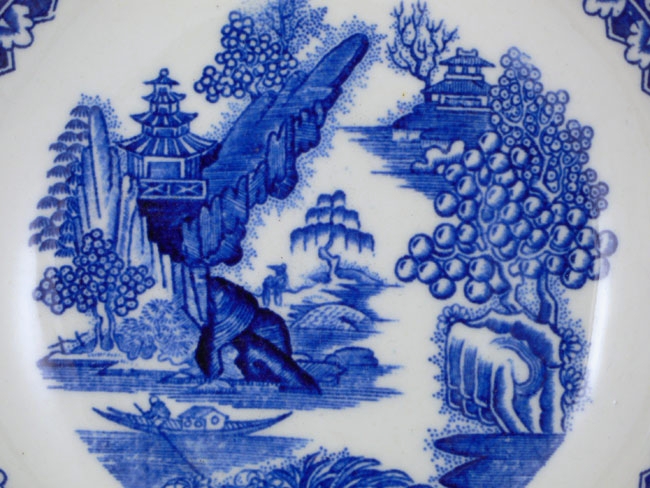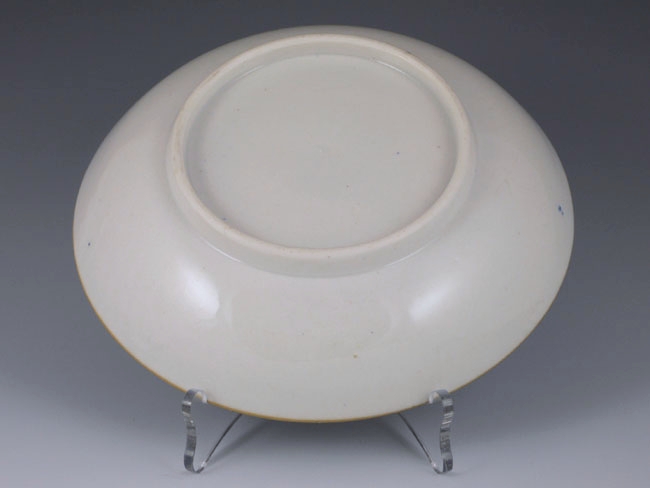A New Hall Saucer, circa 1785
In the mid-1780s, the New Hall partnership was competing with blue painted Chinese wares imported by the Honourable East India Company during the early years of the decade. By printing oriental designs in underglaze blue, New Hall ensured that costs were kept down, making these blue-printed useful wares more saleable.
The overhanging rock, known as the Gazebo pattern, was engraved by hand onto copper plates, and transferred to paper using a method of combined heat and pressure. The resulting pattern was then cut out and applied by female workers to the biscuit porcelain.
This pattern is one of the earliest New Hall printed designs, and incredibly rare pieces have been known to bear a mark in the form of a rampant lion crest. For more on this mark, see Roger Pomfret and Geoffrey Godden.
This example has a brown ochre rim, in imitation of Chinese porcelain, and a stiff-leaf border. A floral border is also recorded on rare examples of this pattern.
Condition: Good – no chips or restoration, just a small and barely-visble Y-shape crack.
Dimensions: Diameter 13.3 cm
New Hall & Its Imitators, David Holgate, Faber (1971).
A Partial Reconstruction of the New Hall Pattern Book, Pat Preller (2003).
New Hall Porcelains, Geoffrey Godden, Antique Collectors’ Club (2004).
Where is the Porcelain of Enoch Wood?, Roger Pomfret, Northern Ceramic Society Journal, Vol.27 (2011).




